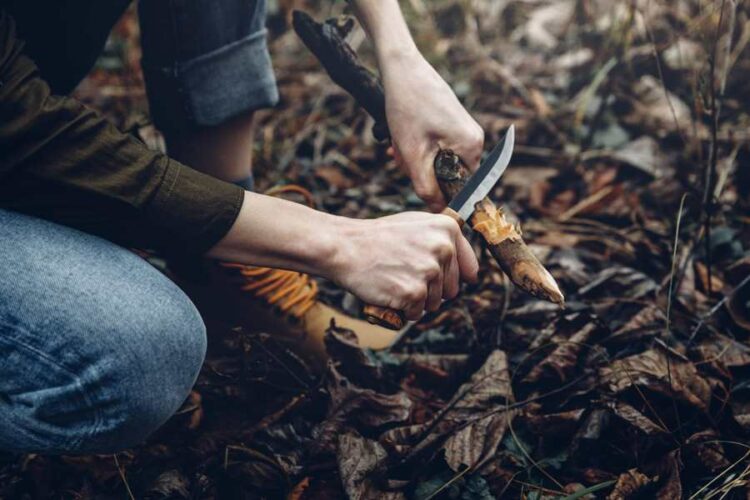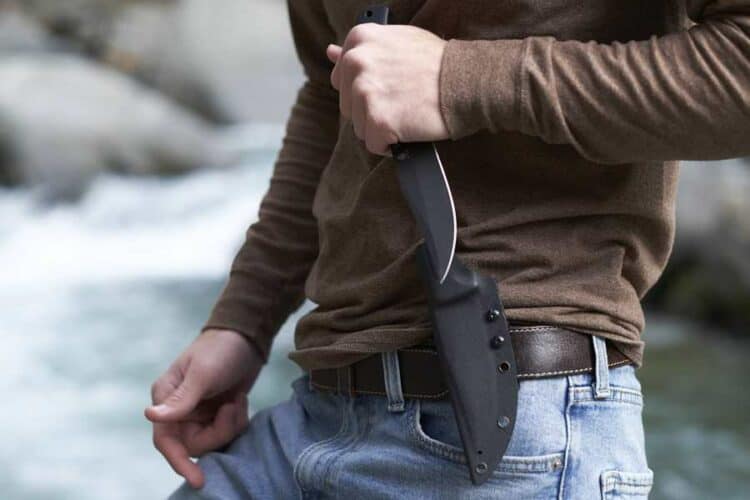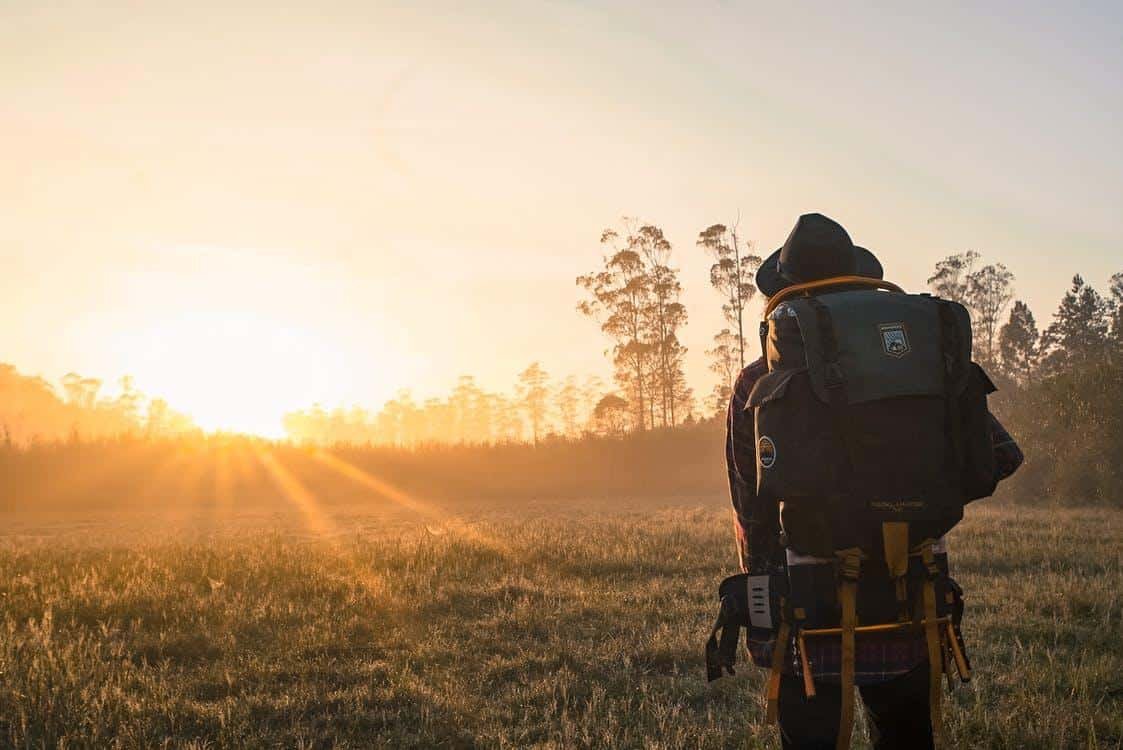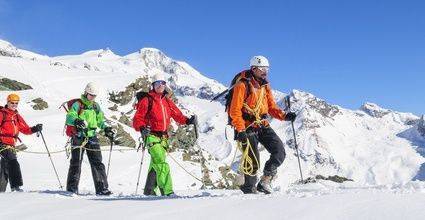Everyone should own a good knife. Not a kitchen knife, but a survival knife. It’s a useful tool that can benefit you in various situations, be it in the wilderness or in an urban setting. It’s also a reliable tool that possesses a valuable capability to cut things, such as wood. You can even use it to dig a hole, prepare food, and signal rescue teams in case you get lost in the woods.
However, not all knives are made equally. Knives come in different shapes, sizes, and materials, so it can be challenging to pick one that suits you the most. Continue reading to learn about what you need to consider when selecting the perfect survival knife.

Choosing the perfect survival knife is essential for anyone who loves spending time in the great outdoors. Whether you’re hiking, backpacking, or camping, a good knife can be the difference between life and death in an emergency situation. So how to choose the perfect survival knife for your next outdoor trip?
First, consider the type of activities you’ll be using it for. If you’re mainly hiking, a smaller knife with a serrated blade will suffice. However, if you’re planning on doing more backpacking or camping, you’ll need a larger knife with a straight blade that can handle tougher tasks.
Second, think about the material you want your knife to be made of. Stainless steel is always a good choice for its durability and rust resistance. However, carbon steel is also an option if you’re looking for a knife that can take a sharper edge.
Finally, don’t forget to factor in cost when making your decision. Survival knives can range in price from $20 to $200, so it’s important to find one that fits your budget. By following these simple guidelines, you’re sure to find the perfect survival knife for your needs.
Understanding Survival Knives
When people think of a survival knife, they usually picture something similar to a big bowie-type knife with a long thick blade. These bigger sheathed knives are usually designed and marketed for taking a beating in a wilderness or a bush-crafting situation. Having this kind of knife in a real survival situation would undoubtedly be a great asset. However, in most cases, the best survival knife will be whichever one you have with you when you need it.
These days, most knives are carried for urban survival because sometimes, getting through the day is already a survival situation itself. For instance, you can build a fire to stay warm on a chilly night or cut bandages when performing first aid. This is why a survival knife proves useful in any outdoor activities, like hiking, backpacking, fishing, mountaineering, and climbing.
The best knife for you can be either a small concealable knife that you can carry around in the office or a heavy-duty blade for hacking through thick forests. In other words, choosing a pocket knife comes down to your preferences and needs.
Fixed Vs. Folding Blade
If you’re shopping for a knife, you’ll notice that your options are split into two distinct categories: fixed-blade and folding-blade knives. The differences between these types are relatively straightforward, but there are significant advantages and disadvantages that come with each.

Fixed Blade
A fixed-blade knife is as it sounds—the blade is fixed in one position and can’t be folded closed. Like any knife, fixed blades have different shapes and sizes, and they’re designed for different functions.
They’re usually stronger than folding knives due to their more solid construction. If you’re looking for a durable knife that you can use for working outdoors or in a trade or hiking through a mountain trail, then you’ll need an optimal survival knife with a fixed blade.
The downside of this option, though, is that it needs to be sheathed, so it’s more difficult to conceal. Larger fixed blades may not be ideal for some environments, including urban settings. Note too that it’s important to check the legality of fixed blades and knives where you live.
Folding Blade
Folding blades, also called folding knives, have a blade that’s attached to a pivot and can bend into the handle of your knife. These types of knives are usually considered ‘pocket knives since they’re generally small, easily concealable, and made to be pocket-friendly.
But folding knives aren’t as strong as fixed blades. This is because they rely on a pivot and have moving parts, which means that there are more potential points of failure in their structure. However, there are a plethora of excellent folding knives. A decent-quality folding knife should be strong enough to handle all of your regular tasks.
It’s convenient and an ideal option for many to carry every day. It comes in many variations to suit different needs. For example, it can be used to open a package, take out a splinter, and cut fruits and meat. Moreover, it can be used to perform an emergency tracheotomy when someone chokes while eating. It’s a practical tool for artists as well since they can use it to sharpen pencils instead of relying on pencil sharpeners that don’t give the types of tips they need.
In terms of disadvantages, folding knives aren’t as strong as fixed blades and generally require more maintenance.
Blade Material
The blade is the main part of the knife. As such, deciding on a blade that’s made of quality material is essential. The most common material for a knife blade is steel, an alloy consisting of iron, carbon, and other metals, depending on the specific steel.
Different steels have different properties, such as hardness, toughness, edge retention, and rust resistance. The ideal steel for you will depend on your needs.
The main properties of steel are as follows:
- Edge Retention: This refers to how much cutting a blade can do before it needs to be resharpened. Keep in mind that higher edge retention also means that a knife will take longer and be more difficult to sharpen.
- Hardness: Hardness refers to how well a blade can handle stress. For example, a harder blade is less likely to deform when used to pry a nail out of a piece of wood.
- Toughness: Toughness has to do with how well your knife will resist cracks and chips. These often occur along the cutting-edge of a blade and can strain your knife’s performance.
- Rust Resistance: This relates to how well a blade can resist corrosion when in moist or wet conditions. For instance, it might be a priority if you’re working on a fishing boat.
- Wear Resistance: Wear resistance is similar to hardness. It refers to a blade’s ability to resist damage from abrasive and adhesive surfaces.
Furthermore, steel can be separated into two main categories: carbon steel and stainless steel. The main difference is that carbon steel has more carbon included, which can increase its strength and edge retention but is prone to corrosion. On the other hand, stainless steel has additional alloys to make it more rust-resistant, often at the cost of edge retention.
The technology behind steel knives has advanced to a point where steel can be made stainless while maintaining strength and edge retention. What’s more, some stainless steels serve better than carbon steel.
Various online resources that detail different blade steels are readily available. It’s important to research and select steel with properties that meet your purpose and suit your environment. Sometimes, you may have to sacrifice certain properties, so you can make room for other properties you’ll need.
Blade Geometry

Blade geometry has to do with the actual shape of your blade. It should be taken into account as well because it plays a significant role in how well your blade performs. The two factors to consider here are blade shape and blade grind.
Blade Shape
A blade’s shape primarily refers to the shape of the blade as it approaches the tip. Some of the most common shapes you’ll encounter are drop point, clip point, spear point, tanto, reverse tanto, and sheep’s foot.
The blade shape you pick mostly depends on what you want, but some shapes can offer more advantages than others. A good example is that tanto tips are often stronger, which are ideal for doing a lot of piercing tasks.
Blade Grind
Blade grind refers to the way the steel is ground behind the edge of your knife. It can be described as the grind on the blade, from its back spine to its cutting edge. Here, the main grinds you’ll find are a full-flat grind, a hollow grind, a convex grind, a chisel grind, a Scandinavian (scandi) grind, and a saber grind.
This property is more important than many people realize. Different grinds lend themselves better to different cutting tasks. Some are stronger but less suited to slicing, like the Scandinavian grind. Some are fit for cutting and slicing but are weaker than the hollow grind.
Handle
Another crucial knife component, the handle is what holds the blade. It’s best to select a knife with an ergonomic handle. The handle shouldn’t include anything that could interfere with your grip, especially if the knife is to be used in a more ‘survival’ type of situation.
Pay attention to the material a handle is made of. The most common handle materials are G-10, carbon fiber, micarta, wood, pressed leather (mostly on outdoor fixed blades), and metal (steel, aluminum, titanium, and so on).
Aside from these materials, you’ll see handle materials listed as (fiber-reinforced nylon) FRN, a durable plastic material that’s common in handles of tactical, survival, or folding knives. FRN, in essence, is a fancy plastic. If the knife is from a reputable brand, its handle material is usually strong enough to handle most tasks.
Tang VS. Locking Mechanism
Tang and locking mechanism refer to the strength of a fixed or folding knife.
In a fixed blade knife, the tang is the unseen ‘tail end of the blade that extends into the handle. A high-quality knife features a full tang, whose end of the blade reaches the base of the handle, so it boasts great strength and durability.
Folding knives don’t have tangs, but rather, they have locking mechanisms that keep them secure in their open position, preventing the blade from closing on your hand. The strength here depends on the locking mechanism. However, these knives won’t be as strong as a full-tang fixed blade.
Common locking mechanisms include the liner lock, frame lock, compression lock, axis lock, back lock, and triad lock. As a general rule, liner locks are more suitable for lighter tasks while back and triad locks are more robust and can handle more intense work.
Conclusion
Knives are excellent tools to carry. Whether you’re on a backpacking trip, going on a night hike, or prepping food, carrying this kind of tool will always be more practical than you might expect. As you search for a survival knife, take all these main factors into account.
Just remember that knives have different configurations. To find the perfect survival knife, determine what your knife is for when you’ll use it, and how you’re likely to use it.




